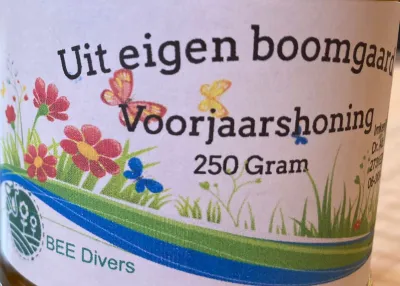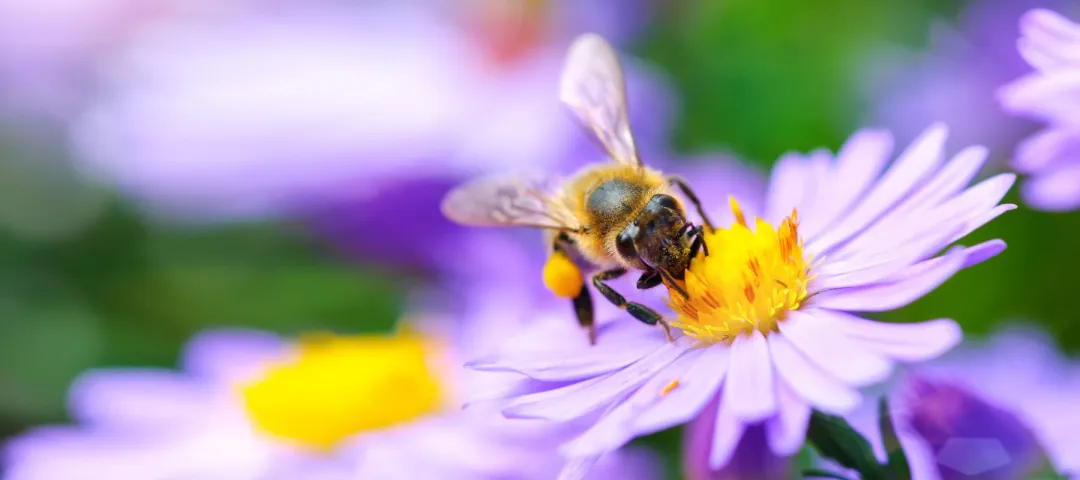General information
RDP Priority
- P4. Ecosystems management
RDP Focus Area
- 4A: Biodiversity restoration, preservation & enhancement
RDP Measure
- M16: Cooperation
Beneficiary type
- Operational group
Summary
This Dutch EIP Operational Group (OG) project, called BEEdivers, developed and tested four different farm revenue models in specific agricultural production systems. Flowering periods were extended, and new products were introduced on livestock farms.
Fruit farmers benefited from enhanced pollination by creating natural habitats for bees. Care farms increased biodiversity around farmyards with new products, and organic mixed farms focused on creating effective short supply chains and improving biodiversity. Crop diversification and soil health practices were also promoted.
The project was carried out in four phases: designing the pilots and collaborations, detailing the revenue models, implementing the pilots, and sharing results. BEEdivers highlighted how farmers could boost their incomes without affecting their usual yields. The project’s focus on less-productive land showed notable economic, environmental and societal benefits.
Evidence was created via robust examples and models that can be scaled up, proving that farming in harmony with nature can increase production while using fewer resources.
Results
Overall, the project successfully integrated biodiversity better into agricultural practices, benefiting farmers economically, enhancing environmental sustainability through carbon sequestration and reduced emissions, and fostering societal awareness and engagement in sustainable farming practices.
This OG project also yielded technological innovation, enhanced knowledge and skills, strengthened community relationships, improved ecosystem health, and recognition for leadership in sustainable agriculture. These outcomes underscored the project's broader impact on promoting sustainable development and fostering resilience in agricultural systems.
More than half of the participating farmers were women. The project’s focus on less-productive land showed notable economic, environmental and societal benefits such as:
- reduced greenhouse gas emissions through sustainable farming practices such as reduced tillage and enhanced biodiversity, and increased carbon sequestration in soils due to improved vegetation cover and diversified crop rotations.
- improved farm profitability through diversified revenue streams such as eco-tourism, agroecology products, and premium market access for biodiversity-friendly produce.

Promoter
Wageningen University & Research*
* The Project promoter/beneficiary is an EIP-AGRI Operational Group ©
Funding
Total budget 237 381 (EUR)
EAFRD: 111 012 (EUR)
National contribution 111 012 (EUR)
Private/own: 15 357 (EUR)
Keywords
Resources
Documents
Links
Context
Testing new ideas to encourage biodiversity is useful for EU farmers in terms of profitability and sustainability because:
- it allows farmers to discover innovative business practices that can enhance ecosystem services, reduce dependency on chemical inputs, and improve soil health. Fostering biodiversity can lead to healthier crop yields and reduced pest and disease pressures, further enhancing the long-term viability of farming operations. By integrating biodiversity-friendly practices, farmers can thus increase resilience to climate change and market fluctuations, ultimately leading to more stable and sustainable income streams.
- these practices can open up new market opportunities for farmers who are able to certify their products as environmentally friendly or organic, potentially attracting consumers who are willing to pay a premium for sustainably produced goods.
- engaging in biodiversity-focused initiatives can help farmers comply with evolving EU agricultural policies and regulations, which increasingly emphasise sustainability and environmental stewardship.
CAP funds can help test new innovations on farms through OGs, such as BEEdivers from The Netherlands, which was set up to reduce risks affecting biodiversity in peat soil areas. Water levels in the Dutch low delta are changing as a result of subsidence, soil compaction, decreasing supply of meltwater and rising sea levels.
OG members included a wide range of agricultural stakeholders from livestock, fruit, and care farms. They shared mutual interests in new opportunities for farm profitability from nature-based solutions promoting farmyard biodiversity. This approach would not impinge on the farms’ main field spaces, and it sought to optimise more non-productive land.
Objectives
OG support aimed to help different farm types facing common challenges, such as fluctuating market prices, increasing production costs, and the need to adopt sustainable practices amidst growing environmental concerns, including the importance of peatlands. Specific objectives sought to:
- provide economic benefits for farmers through biodiversity enhancement.
- develop sustainable revenue models for different types of farms.
- demonstrate the viability of integrating biodiversity into farm operations.
- promote sustainable agricultural practices in response to market and regulatory demands.
- support farmers in adopting eco-friendly practices.
- mitigate the negative effects of rising water levels on plant communities.
- enhance biodiversity on farms in the low delta region of the Netherlands on and around farms through practices supporting honeybees and hoverflies.
- increase awareness of the importance of biodiversity for agricultural productivity.
Activities
The project developed and tested four distinct models tailored to livestock, fruit, care farms, and mixed organic farms. This involved using advanced techniques for extending flowering periods, improving pollination through natural habitats, and creating effective short supply chains. The OG’s four main project actions were:
1. Pilot Design and Partnership Formation
Designing pilot initiatives and establishing partnerships to enhance biodiversity on farms.
Identifying farms across various sectors (veal farming, fruit orchards, mixed farming, care farms) suitable for biodiversity practices. Conducted workshops and networking events to introduce project goals and engage stakeholders.
Seminars and meetings to gather input from farmers and local organisations, ensuring alignment with biodiversity goals and farm management practices.
2. Detailed Design of Biodiversity Revenue Models
Developed detailed revenue models focused on biodiversity enhancements in agricultural settings.
Conducted economic assessments and environmental analyses tailored to each farm type. Collaborated closely with stakeholders to refine models for local conditions.
Shared model designs and economic assessments through workshops, consultation sessions and letting farmers explain their experiences in videos and sharing on their own social media channels. Solicited feedback from farmers and experts to enhance model effectiveness and applicability.
3. Pilot Execution and Monitoring
Implemented biodiversity practices on selected farms to evaluate their impact and economic viability.
Executed tailor-made activities such as extending flowering periods, establishing bee habitats, promoting crop diversification, and improving soil health practices.
Field days, farm visits, and demonstrations to showcase implemented practices. Published case studies and technical reports to disseminate outcomes among stakeholders and agricultural communities.
4. Results Dissemination and Upscaling
Disseminated project findings and prepared for scaling successful biodiversity models in agriculture.
Analysed data to assess biodiversity improvements, economic benefits, and social impacts. Developed guidelines and recommendations for scaling up successful models.
Continued CAP support facilitated dissemination activities and engagement with policymakers.
Presented findings at national and international conferences, workshops, and forums. Engaged policymakers to advocate for biodiversity integration in agricultural policies.
Main results
Overall, the project successfully integrated biodiversity better into agricultural practices, benefiting farmers economically, enhancing environmental sustainability through carbon sequestration and reduced emissions, while fostering societal awareness and engagement in sustainable farming practices. This project also yielded technological innovation, enhanced knowledge and skills, strengthened community relationships, and improved ecosystem health and recognition for leadership in sustainable agriculture. These outcomes underscored the project's broader impact on promoting sustainable development and fostering resilience in agricultural systems.
More than half of the participating farmers were women, and the project’s focus on less-productive land showed notable economic, environmental and societal benefits:
- reduced greenhouse gas emissions through sustainable farming practices such as reduced tillage and enhanced biodiversity. Increased carbon sequestration in soils due to improved vegetation cover and diversified crop rotations.
- farmers benefited by implementing practices that mitigate climate change impacts and enhance ecosystem resilience. Environmental organisations gained data to support biodiversity conservation efforts.
- improved farm profitability through diversified revenue streams such as eco-tourism, agroecology products, and premium market access for biodiversity-friendly produce.
- farmers and local agricultural communities experienced economic gains from new income opportunities and enhanced market competitiveness for sustainable products.
- enhanced community engagement and knowledge-sharing through workshops, field days, and educational programmes on sustainable agriculture and biodiversity conservation.
- consumers benefited from increased access to, and awareness of, biodiversity-friendly products, supporting preferences for sustainable consumption choices.
The project developed a logo, which is still in active use by the farmers.
Key lessons
Climate-adaptive perennials, shrubs and trees were chosen, eliminating unnecessary water use for irrigation and allowing the plants to last for decades.
Using the yard or farmhouse garden as a hot spot for biodiversity allows farmers to use a wide range of perennials, shrubs and trees that play a major role in stimulating biodiversity. Insects may not discriminate between native or non-native, but seek nectar for their daily energy supply and pollen for their larvae.
Investing in woody perennial crops has a long-term impact on various ecosystem services in the farmyard, such as sun shade, wind lee, aesthetics, nesting habitat, food for various animal groups, fuel options, and multi-year production of fruits for processing and marketing.
Implementing pilot projects to test and refine biodiversity strategies ensures adaptability to local conditions.
"We want to continue to distinguish ourselves in the market; even more sustainable, even more nature management, more animal welfare, better water management and more contact with consumers. Almost all of the land belonging to the farm is designated as a nature reserve. Nature takes priority here. Meadow birds, butterflies, frogs and other animals are just as important as the cows. The BEEdivers project fits in perfectly with our wish to increase biodiversity on the farm and to ensure that even more plants and animals feel at home on our farm."
"Bumblebees are the best at pollinating our cherry trees and two colonies of honeybees also help with this. It is therefore very important that they have enough to eat, even when our fruit trees are not in bloom. I didn't have to think long about participating in BEEdivers. The trees with blossoms, hedges with ornamental fruits and containers with beautiful flowers are also fantastic for our visitors to the country shop and restaurant to see. I did have an important request; the new plants were not allowed to attract additional birds, due to eating the cherries. The researchers have put a lot of thought into this." Jan Sonneveld, Landwinkel Sonneveld in Benthuizen "We are constantly looking for opportunities to increase biodiversity on our farm and want to further develop into a regenerative agricultural company. Together with the researchers from Wageningen University & Research, we have chosen from the BEEdivers toolbox to expand our orchard and insect garden. We expect to increase the fruit yield of the orchard, and greening our yard will make it even more attractive to our guests."
"Sustainable meat from our special Lakenvelders and meadows full of meadow birds were the pillars of our company. The combination of two new projects has now added a third pillar, namely biodiversity, by encouraging the arrival of bees and butterflies. In collaboration with Wilder-land, three tea plant hedges have been created in our new 'polder garden', including blackcurrant, raspberry, blackberry and elderberry. Good for the wild bees and delicious herbal tea from our polder garden will soon be available for sale via Wilder-land. The BEEdivers project fits seamlessly with the development of the polder garden, with the planting of even more hedges and shrubs. This makes our farm a paradise for wild bees, hoverflies and butterflies."
Marc Ravesloot

